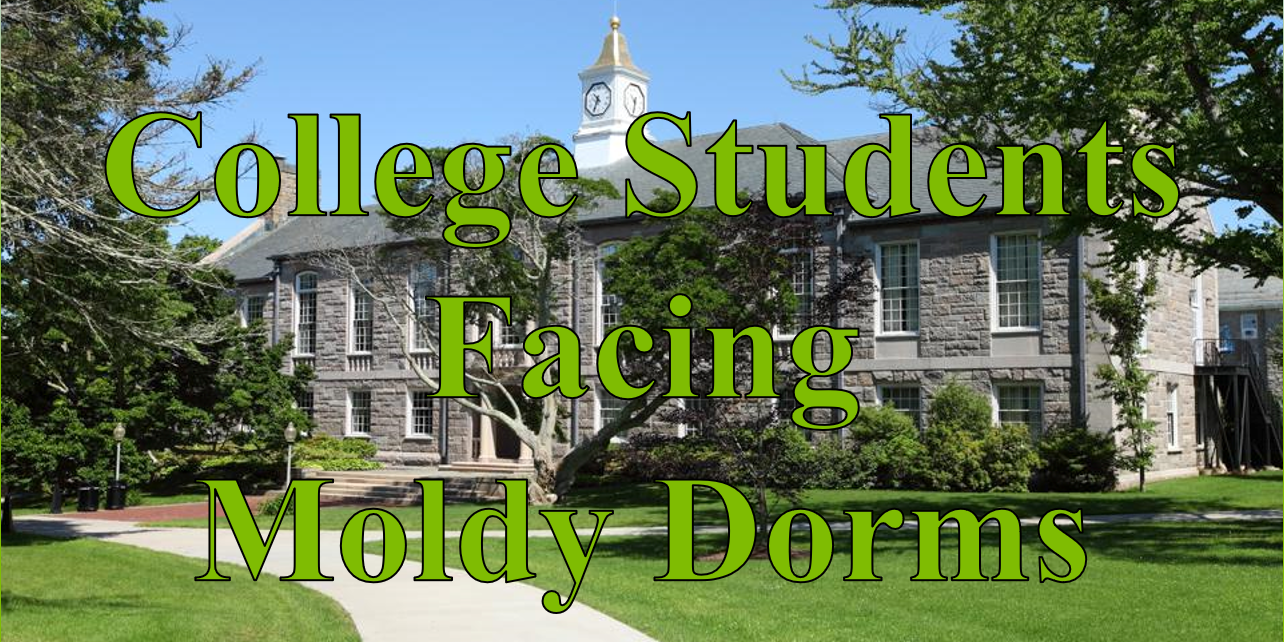Anytime you pack hundreds to thousands of students into a college campus, mold may visit the dorms and hallways bringing a variety of health effects (see our previous article on Virginia Commonwealth University here) . To put that many people in one area, you need large building, often with flat roofs and always with extensive HVAC ductwork and plumbing. Then there is the fact that not all college students are the most fastidious in their housecleaning. Between aging HVAC and plumbing, lagging room cleaning, and close quarters, mold may find a happy home in the dorms of college campuses.
In this report concerning the University of Rhode Island, the school appears to be taking things seriously. With an increasing number of mold reports this year (article dated December 7, 2021), they are investigating and cleaning up mold identified by testing. I do appreciate that their protocol includes both air and surface testing. Often remediators or inspectors only want to do air testing which can miss heavier mold spores like Stachybotrys (the infamous “black mold”). Once found, they have even evacuated groups of students until the remediation work could be done.
I would disagree with one conjecture by the university spokesperson in the article. They recognize an increase in upper respiratory illnesses in college students across the nation, but do not attribute the rise to either COVID nor mold. Given the high number of mold toxic patients we see at Sanctuary, we can report that a significant percentage suffer from what appears to be mild immune compromise before therapy. Many will tell us that they would experience frequent respiratory illnesses when living in mold homes or from moldy workplaces.
In studying mold toxicity’s impact on our immune system, there are a number of imbalances in the body’s ability to fight off viral invaders. One of the more common and easily identified imbalances is the occasional low CD57 natural killer cell count. Biotoxins like Lyme and mold can suppress this immune white cell which patrols our bodies for viral infections and tumor cells. When it finds cells infected with viruses or mutated into a cancer cell, it helps destroy that cell. The CD57 tag is simply a protein found only on the surface on these natural killer cells. By counting how many cells have CD57 on them, we can know how many natural killer cells are in our blood stream. Lower numbers mean some measure of immune suppression.
As a functional medicine provider caring for many hundreds of mold toxic patients, I am always thankful to see mold exposure getting attention as a problem to be addressed instead of ignored. I am sad that many college students do suffer from these moldy dorms. We have seen many college careers wrecked prior to seeing us for treatment, but it is rewarding when they care return and thrive in mold free environments. Helping these students live healthier more abundant lives puts a smile on our faces.
University of Rhode Island addresses ongoing mold concerns in on-campus housing. WJAR Providence 10News. MSN News. https://www.msn.com/en-us/news/us/university-of-rhode-island-addresses-ongoing-mold-concerns-in-on-campus-housing/ar-AARyLGr. Published December 7, 2021. Accessed January 5, 2022.
Sanctuary Functional Medicine, under the direction of Dr Eric Potter, IFMCP MD, provides functional medicine services to Nashville, Middle Tennessee and beyond. We frequently treat patients from Kentucky, Alabama, Mississippi, Georgia, Ohio, Indiana, and more... offering the hope of healthier more abundant lives to those with chronic illness.







